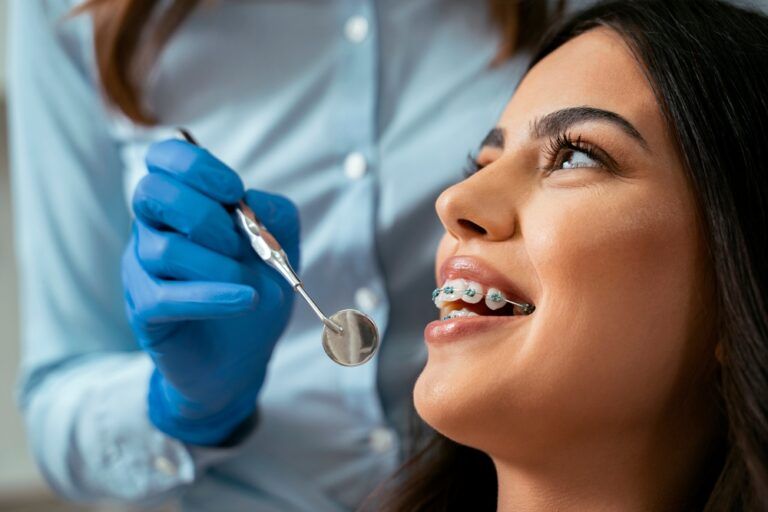Braces for Adults: What You Need to Know

Orthodontic treatment is no longer just for teenagers. Today, more adults in Glendale, CA, are exploring braces as a way to improve their smiles and oral health. Whether driven by cosmetic reasons or the desire to correct bite and alignment issues, braces for adults have become a popular and effective solution. Understanding the process, benefits, and considerations can help adults make informed decisions about their orthodontic care.
Why More Adults Are Choosing Braces
There has been a significant rise in adult orthodontics over the last decade. Many adults are realizing that it’s never too late to achieve a healthy, well-aligned smile. Advances in technology have made braces more discreet and comfortable, reducing the stigma once associated with orthodontic treatment in adulthood.
In addition, adults are more aware of the health benefits that come with correcting misaligned teeth. Proper alignment can reduce the risk of gum disease, tooth decay, and jaw discomfort, which makes the decision to pursue treatment a practical one, not just an aesthetic choice.
Benefits of Braces for Adults
Getting braces as an adult offers both functional and cosmetic advantages. Straighter teeth make it easier to maintain good oral hygiene, reducing the buildup of plaque and tartar that can lead to gum disease. Proper alignment also reduces abnormal wear and tear on the teeth, extending their longevity.
From a confidence standpoint, a straighter smile often leads to improved self-esteem and a more positive first impression in personal and professional settings. The benefits extend beyond appearance, influencing overall health and quality of life.
Types of Braces Available for Adults
Adults today have several options when it comes to orthodontic treatment. Each type of braces offers unique features to accommodate different preferences and treatment needs:
- Traditional metal braces: Durable and effective, ideal for more complex alignment issues.
- Ceramic braces: Less noticeable due to their tooth-colored brackets, offering a more discreet option.
- Lingual braces: Placed on the back of the teeth for a hidden appearance, though they may take time to get used to.
- Clear aligners: Removable, nearly invisible trays that are best for mild to moderate alignment issues.
Choosing the right type depends on the complexity of the dental correction needed, budget, and lifestyle preferences.
The Process of Getting Braces as an Adult
The journey begins with an orthodontic consultation to assess the current state of your teeth and bite. During this evaluation, diagnostic imaging like X-rays and digital scans help create a personalized treatment plan. Once the plan is in place, braces or aligners are applied, and regular follow-up visits are scheduled to monitor progress and make necessary adjustments.
Treatment times vary depending on the complexity of the case but typically range from 12 to 36 months. Throughout the process, maintaining good oral hygiene and attending scheduled appointments are crucial to achieving the desired results.
Challenges Adults May Face with Braces
While orthodontic treatment is highly effective, adults may encounter certain challenges that younger patients do not. For example, adults may have slower bone metabolism, which can extend treatment times. Additionally, existing dental work, such as crowns or implants, can complicate the alignment process.
Compliance can also be a challenge, particularly with removable options like clear aligners that require consistent wear. Awareness of these factors helps adults set realistic expectations and stay committed to their treatment plan.
Lifestyle Adjustments During Treatment
Living with braces as an adult often requires small but important lifestyle adjustments. Dietary changes, such as avoiding hard or sticky foods, are recommended to prevent damage to braces. Extra time for brushing and flossing is also necessary to maintain oral hygiene and avoid issues like cavities or staining during treatment.
For adults using clear aligners, discipline is key. Aligners must be worn for the recommended number of hours each day and removed only for eating, drinking, and cleaning. With proper care and attention, these adjustments become part of a routine that supports a smooth orthodontic experience.
Post-Treatment: Retainers and Maintenance
Once braces are removed or aligner treatment is completed, the retention phase begins. Retainers are essential to maintaining the new alignment of your teeth and preventing them from shifting back to their original positions.
Regular dental checkups, consistent oral hygiene, and wearing retainers as directed are crucial to protecting the investment made in orthodontic treatment. Proper maintenance ensures long-lasting results and helps avoid the need for retreatment in the future.
Long-Term Benefits of Adult Orthodontics
Investing in orthodontic care as an adult pays dividends for both oral health and overall well-being. Beyond the aesthetic advantages, properly aligned teeth contribute to better function, less strain on the jaw, and improved oral hygiene.
For many adults in Glendale, CA, the decision to pursue braces results in increased confidence and improved health, making it a valuable and rewarding journey regardless of age.
Closing Thoughts
Braces for adults are more accessible, comfortable, and effective than ever before. By understanding the process, benefits, and considerations involved, individuals in Glendale, CA, can make informed decisions about their orthodontic care. At Massih Orthodontics, the focus is on education, empowering adults to take charge of their oral health and embrace the benefits of a straighter, healthier smile.
References
Proffit, W. R., Fields, H. W., & Larson, B. E. (2018). Contemporary Orthodontics. Mosby.
Niederman, R., & Kuang, R. (2018). Adult orthodontics: A review of evidence-based treatment. Journal of the American Dental Association.
Melsen, B., & Verna, C. (2000). Functional occlusion: Theory and practice. Angle Orthodontist.

Recent Comments